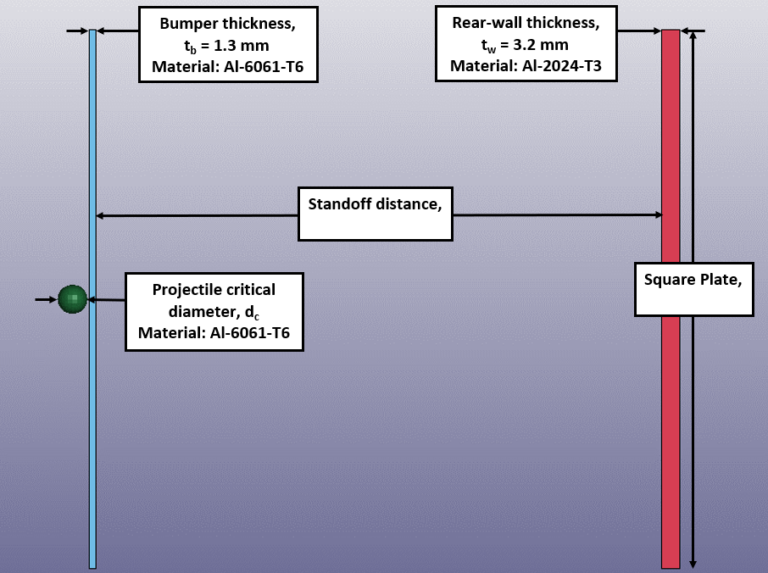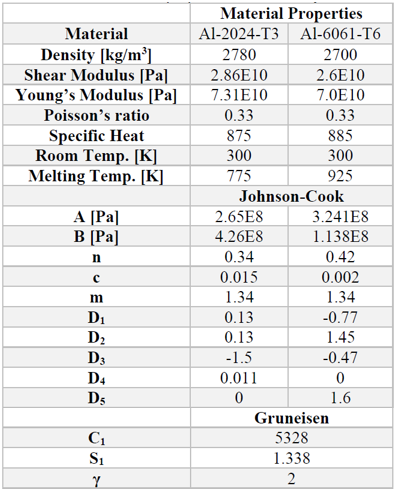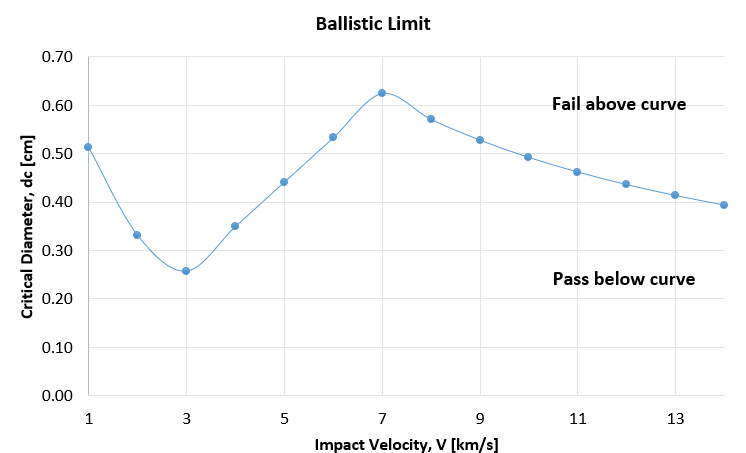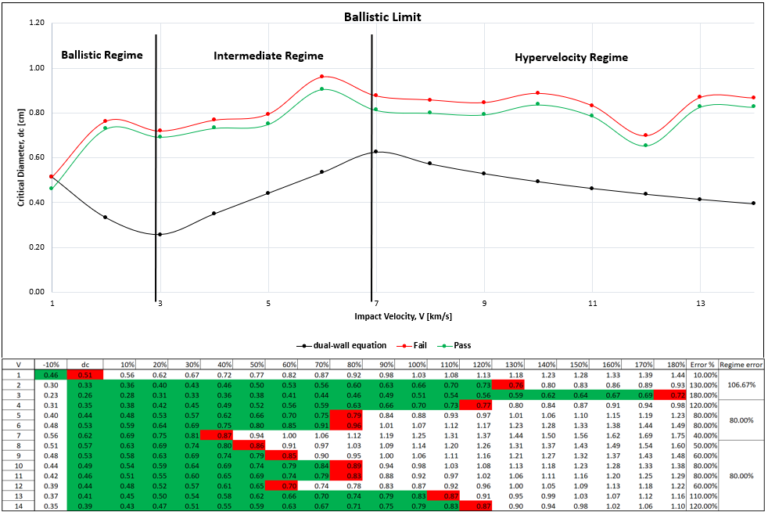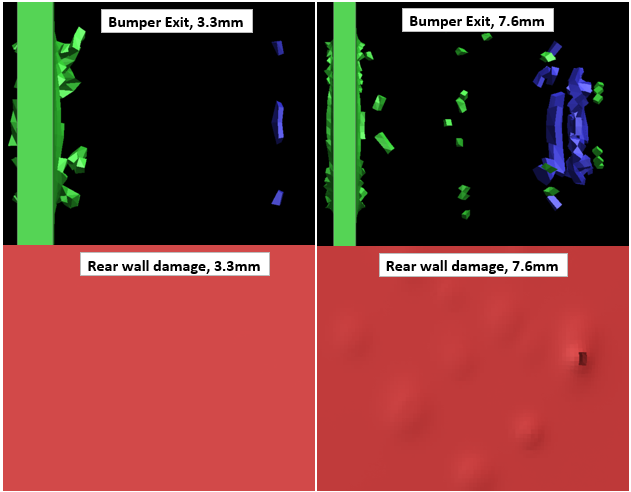Hypervelocity Impacts on a Whipple Shield
Objective: Investigate hypervelocity impacts of space debris on a whipple shield using LS-Dyna and compare numerical results to the experimental ballistic limit equation.
A whipple shield is used to protect manned and unmanned spacecraft from hypervelocity impacts of space debris. The debris ranges from plastics to metals and are as small as a few millimeters in diameter travelling at an average speed of 10km/s. At attempt was made to correlate numerical results to experimental. Where the experimental results are taken from the ballistic limit equation for a bumper and rear wall configuration. This tells us the size of projectile needed to penetrate the Whipple shield and is a function of material properties, impact angle, and speed.
It was found that the numerical and experimental results did not correlate well. This was due to three aspects of the model, shock wave modelling, contact between the elements, and equation of state. I believe the biggest contribution is the contact of elements. FEM is not the best option for modelling high deformation due to the fact that when elements break off they are deleted and no longer contribute to the physics of the model. To attempt to fix this a different approach can be used called Smooth Particle Hydrodynamics (SPH). This way particles remain and debris generation from the impact can be simulated.
